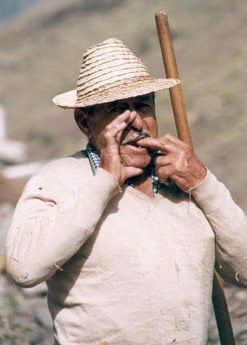I am currently teaching
Carol Gaab's novel Esperanza to my 8th graders. The novel has been a real hit with students and I am particularly fond of it because of the potential for really rich cultural and historical study. It doesn't hurt that there are a ton of resources out there from some very creative teachers for use with the novel. For example,
Martina Bex has a ton of beautifully designed graphic organizers aligned to each chapter. The
teacher's guide is packed with excellent teaching ideas (among my favorites is the simultaneous acting which I intend to blog about later) and a thorough supplement of presentations on Guatemalan history, culture, family, and traditions. Finally, the
Language Educator recently published an article by Carrie Toth on using the novel to develop global awareness.
We have just completed chapter four of the novel and my students are really excited as this is when the action sets in. I've used the teacher's guide and the novel in order to facilitate some pretty interesting conversations regarding justice and injustice, worker's unions, and the right to strike but, I wanted my students to know more about of the history of the Guatemalan Civil War, in order to give the events in the novel more of a meaningful, historical context. This was a tricky thing to do for various reasons. The first biggest challenge was that the Guatemalan Civil War was an extremely long, violent, and inhumane conflict throughout which the United States did not play a particularly sympathetic part. The second problem was that I teach middle school and I didn't want to derail the unit on Esperanza into a far too sophisticated exploration of the causes of the Guatemalan Civil War. Finally, I had to keep it comprehensible. Aware of these potential pitfalls, I began searching for resources that would let me develop a comprehensible explanation of the causes of the Guatemalan Civil War without overwhelming my middle schoolers. Below are some of the best resources I found in my search:
From these resources I pieced together this PPT presentation that made use of the vocabulary structures we were studying (these structures were taken directly from the novel).
The problem then became, how do I present this to 8th graders? My objectives were threefold: To have students understand some of the causes of the Guatemalan Civil War in order to give the novel some historical context. To reinforce the vocabulary structures we were learning in class by providing comprehensible input. Finally, to have students understand and recognize "injusticias." Below is an outline of the lesson I taught.
1. I had students write down the words "justo" and "injusto" with their English definitions in their notes. Then, I projected a series of sentences like "Hay una fiesta y solo los que lleven camisas rojas pueden ir" on the board and called on students to identify each as either fair or unfair. (This activity was taken directly from the Teacher's Guide to the novel.)
2. I then showed the class a three minute clip from the film,
When the Mountains Tremble, in which Rigoberta Menchú describes her experiences working on the sugar plantations as a young girl. The clip also shows actual footage from the worker's movement in Guatemala and the military's decision to crack down on this movement. The clip runs roughly from 1:10 to 1:07 of the film. During our viewing I paused and asked students whether events were "justo" or "injusto" and had them explain.
3. I then began to present them with the PPT. The presentation took two days. After the first day, I had them complete the reading below which is essentially the text from the presentation. I wanted them to read first before we discussed the presentation.
4. After finishing the presentation, I had students write a personal reaction to the history. I explained that a formal personal reaction should start with an explanation of what they had read/seen/heard. The next step was to describe the emotion that they felt when reading, viewing or hearing a description of the events. (I gave them guided questions and sentence starters to help them with this activity. For example, ¿Cómo te sentías cuando leíste el artículo, «La Guerra Civil de Guatemala»? Me sentía ... porque...) I then wanted the students to give me details and examples (detalles y ejemplos) and, finally, they were asked to make a personal connection to the text (¿Has experimentado / leído / oído de una injusticia?).
